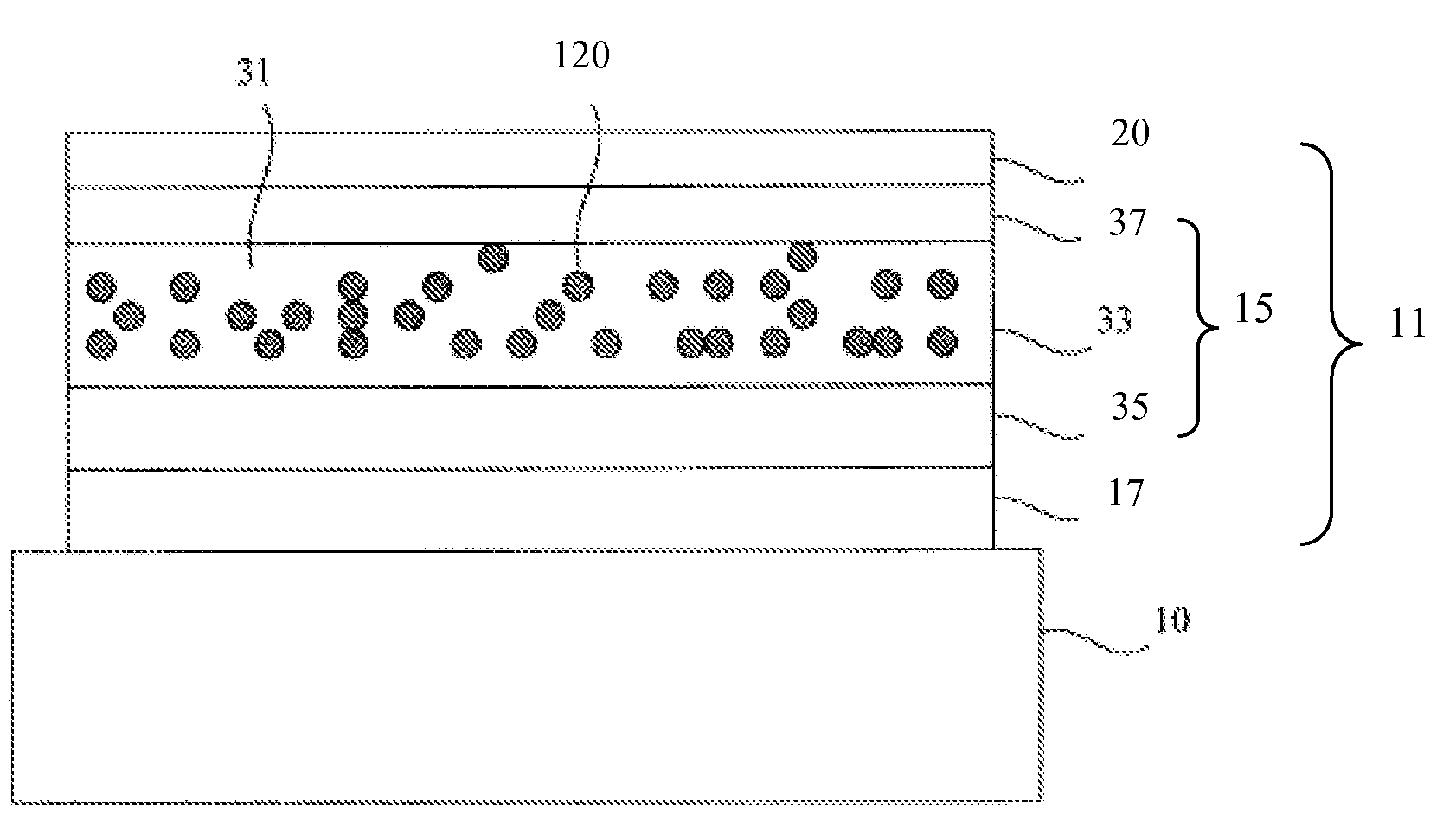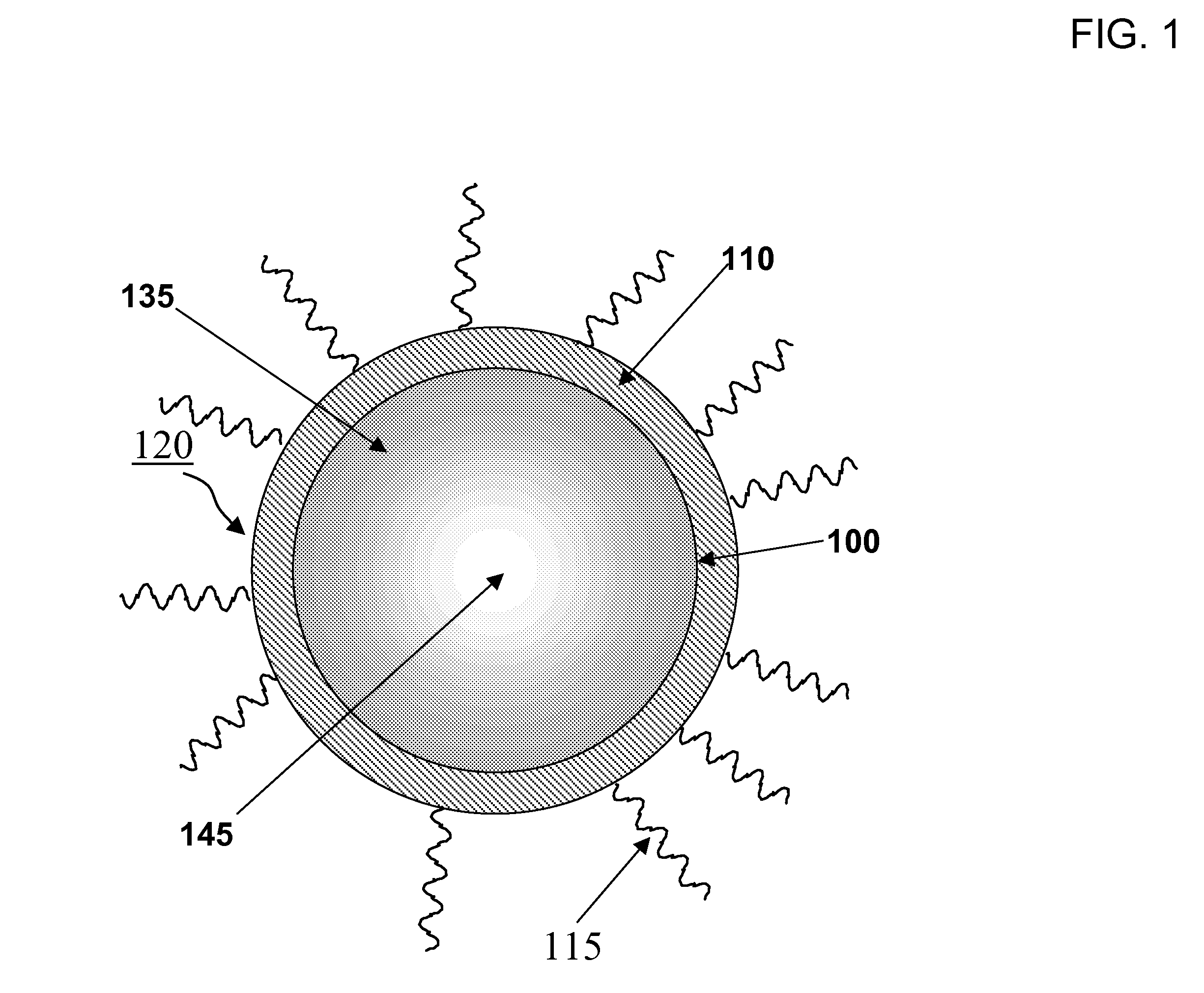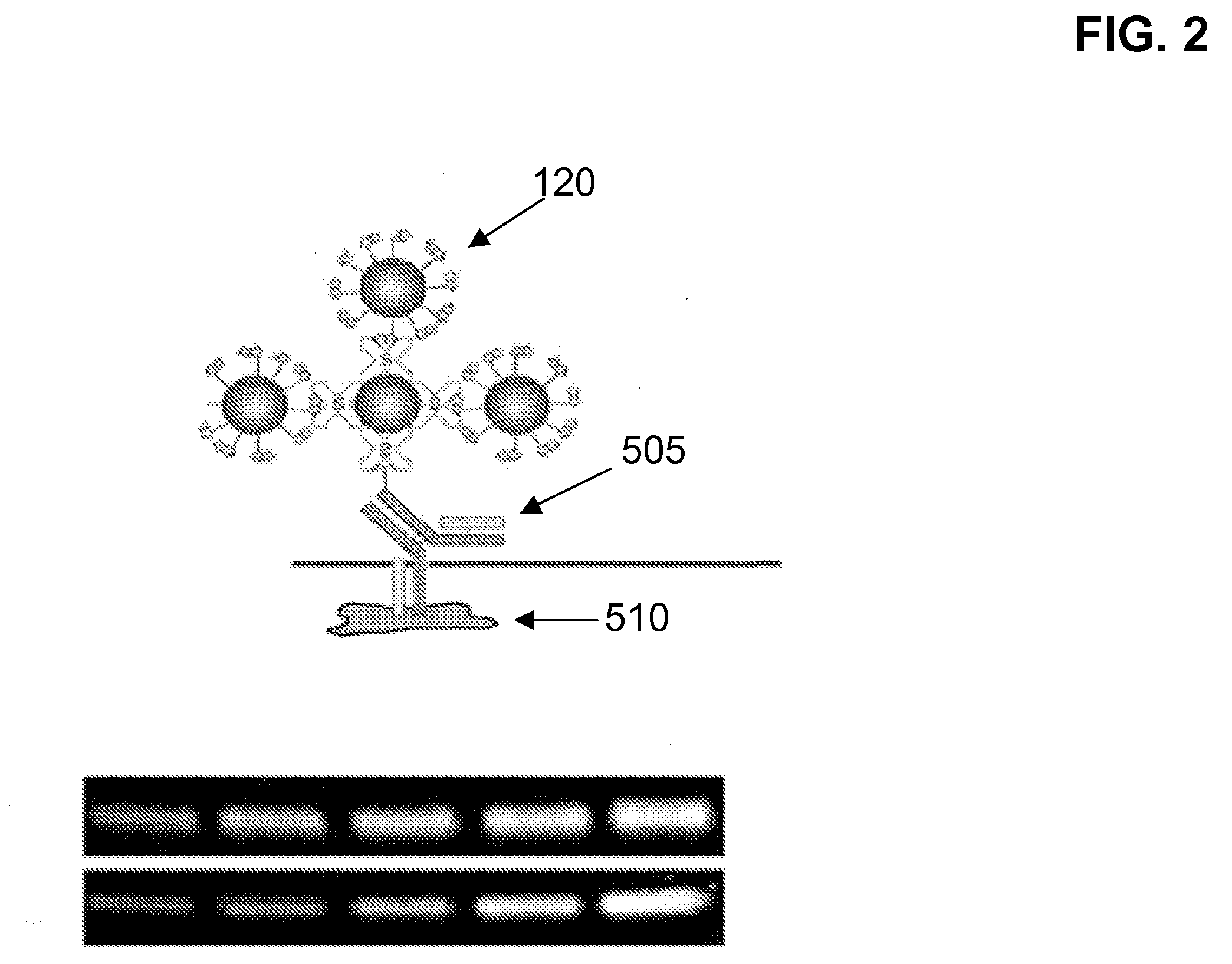Device containing non-blinking quantum dots
a quantum dots and nanocrystal technology, applied in the field of non-blinking nanocrystals, can solve the problems of limiting the use of colloidal quantum dots in luminescent applications, affecting the performance of colloidal quantum dots, so as to reduce radiative lifetime, short radiative lifetime, and enhance the effect of quantum dot phosphor films
- Summary
- Abstract
- Description
- Claims
- Application Information
AI Technical Summary
Benefits of technology
Problems solved by technology
Method used
Image
Examples
example i-1
INVENTIVE EXAMPLE I-1
Preparation of the Inventive Ternary Core / Shell Non-Blinking Nanocrystals, CdxZn1-xSe / ZnSe
[0082]All synthetic routes were carried out using standard airless procedures with a dry box and a Schlenk line. The first step in creating the ternary cores was to form CdSe cores. Typically, 0.0755 g of TDPA (1-tetradecylphosphonic acid), 4 g of pre-degassed TOPO (trioctylphosphine oxide), and 2.5 g of HDA (hexadecylamine) were added in a three-neck flask. The mixture was degassed at 100° C. for half an hour. The stock solution of 1 M TOPSe was prepared by dissolving of 0.01 mol selenium in 10 ml TOP (trioctylphosphine). 1 ml of TOPSe was added to the flask and the mixture was heated to 300° C. The cadmium stock solution (0.06 g of CdAc2 in 3 ml TOP) was quickly injected under vigorous stirring resulting in nucleation of CdSe nanocrystals, after which time the temperature was set at 260° C. for further growth. After 5-10 min, the heating was removed and the flask was allo...
example i-2
INVENTIVE EXAMPLE I-2
Preparation of the Inventive Ternary Core / Shell Non-Blinking Nanocrystals, CdxZn1-xSe / ZnSeS
[0085]All synthetic routes were carried out using standard airless procedures with a dry box and a Schlenk line. The first step in creating the ternary cores was to form CdSe cores. In a three-neck flask, 0.2 mmol of CdO and 0.5 g of stearic acid were heated to 180° C. until the mixture went clear. Inside of a dry box, 3 ml of HDA and 6 ml of TOPO were added to the mixture. On a Schlenk line the mixture was heated to 310° C. under vigorous stirring, whereupon 1 ml of 1 M TOPSe was injected. The temperature was then lowered to 290-300° C. and stirred for an additional 10 minutes.
[0086]Next a ZnSe shell was formed on the CdSe cores. After cooling the core crude solution back to room temperature, it was reheated to 190° C. In a syringe was added 260 μl of 1 M diethylzinc in hexane, 260 μl of 1M TOPSe, and 2 ml of TOP. The contents of the syringe were then added to the CdSe co...
PUM
 Login to View More
Login to View More Abstract
Description
Claims
Application Information
 Login to View More
Login to View More - R&D
- Intellectual Property
- Life Sciences
- Materials
- Tech Scout
- Unparalleled Data Quality
- Higher Quality Content
- 60% Fewer Hallucinations
Browse by: Latest US Patents, China's latest patents, Technical Efficacy Thesaurus, Application Domain, Technology Topic, Popular Technical Reports.
© 2025 PatSnap. All rights reserved.Legal|Privacy policy|Modern Slavery Act Transparency Statement|Sitemap|About US| Contact US: help@patsnap.com



